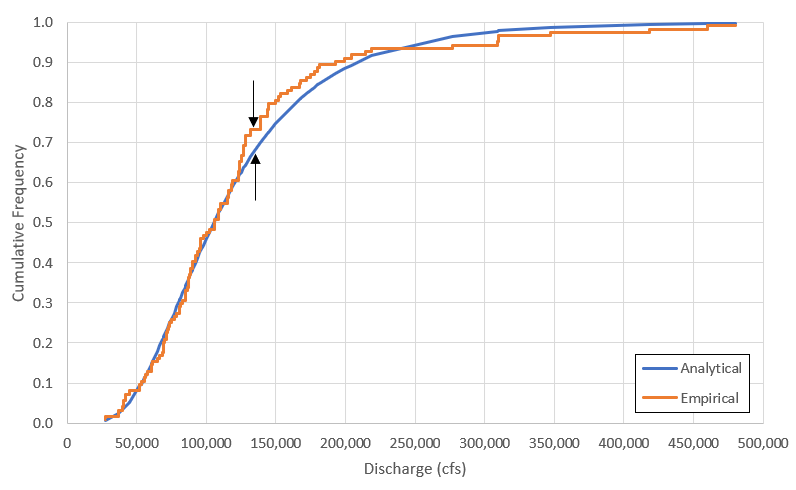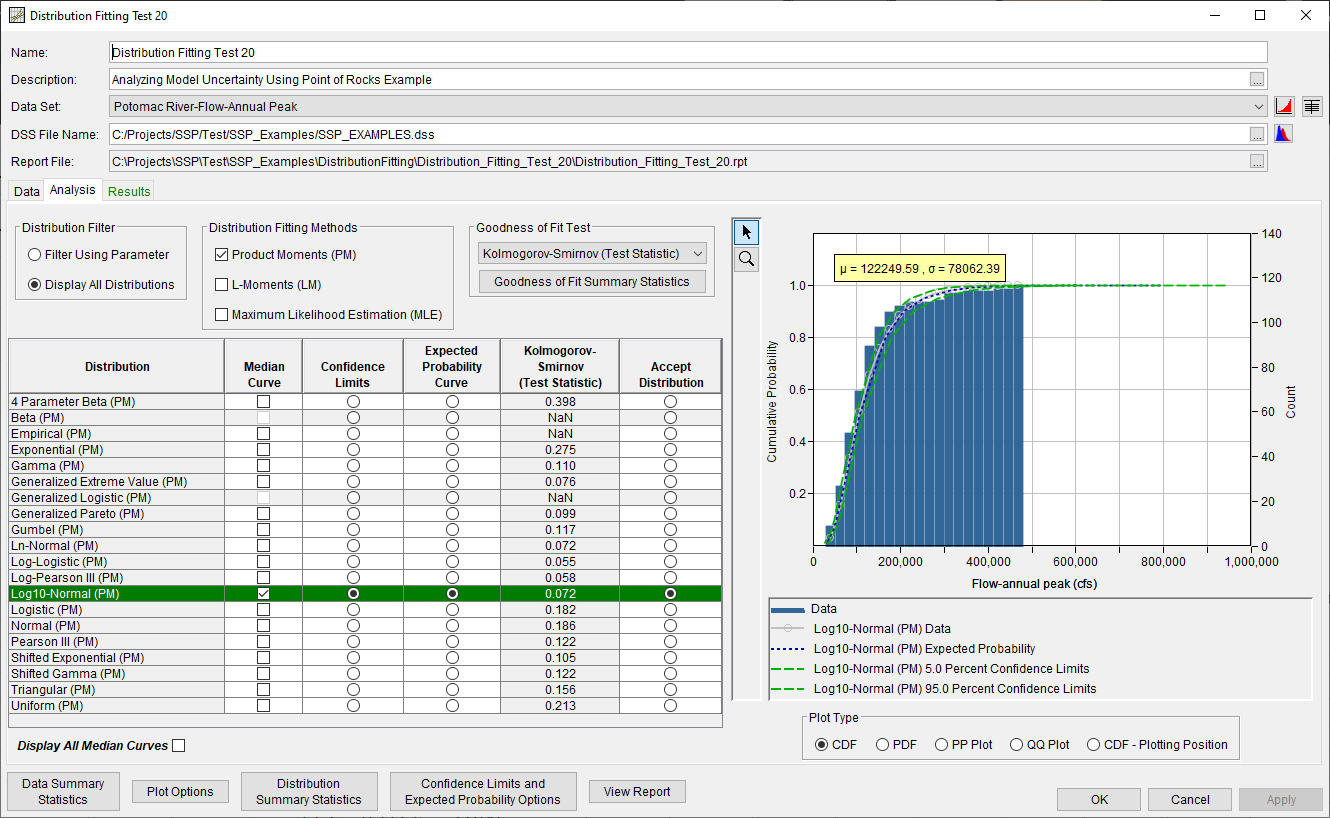Using the ABS function in Excel, compute the absolute value of the difference between the empirical and analytical CDF values for each discharge. Next, use the MAX function to find the maximum difference between the empirical and analytical CDF values. This is the K-S test statistic. The analytical and empirical cumulative distribution functions are shown below. The maximum difference between the 2 functions is indicated by black arrows.

The computed K-S test statistic value is 0.072. To compare with the value computed by HEC-SSP, double click Distribution Fitting Test 20. Select the Analysis tab and click the Goodness of Fit Summary Statistics button.

The computed K-S test statistic matches the value from Distribution Fitting Test 20 in the HEC-SSP Examples.